The flag of Nicaragua beautifully encapsulates the nation’s voyage through time and its environmental richness. It stands as a symbol of the country’s enduring spirit and collective aspirations, striking a balance between reverence for its storied past and an optimistic vision for its future.
Flag of Nicaragua
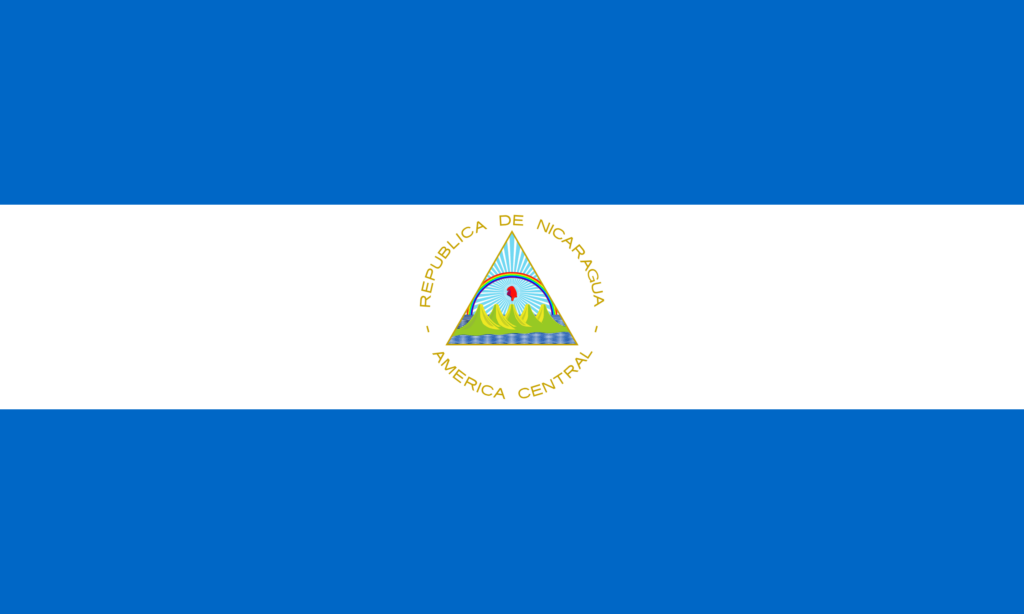
The flag of Nicaragua is characterized by its elegant and meaningful design. Comprising three horizontal stripes, with blue stripes at both the top and bottom and a white stripe in the center, the flag captures Nicaragua’s national essence.
While straightforward, the Nicaraguan flag’s design carries profound symbolism, reflecting the nation’s serene beauty. Excluding the detailed Coat of Arms, the flag’s layout itself—a trio of horizontal stripes—echoes Nicaragua’s sense of originality and its interconnectedness with the Central American region
Flag of Nicaragua: Color Palette
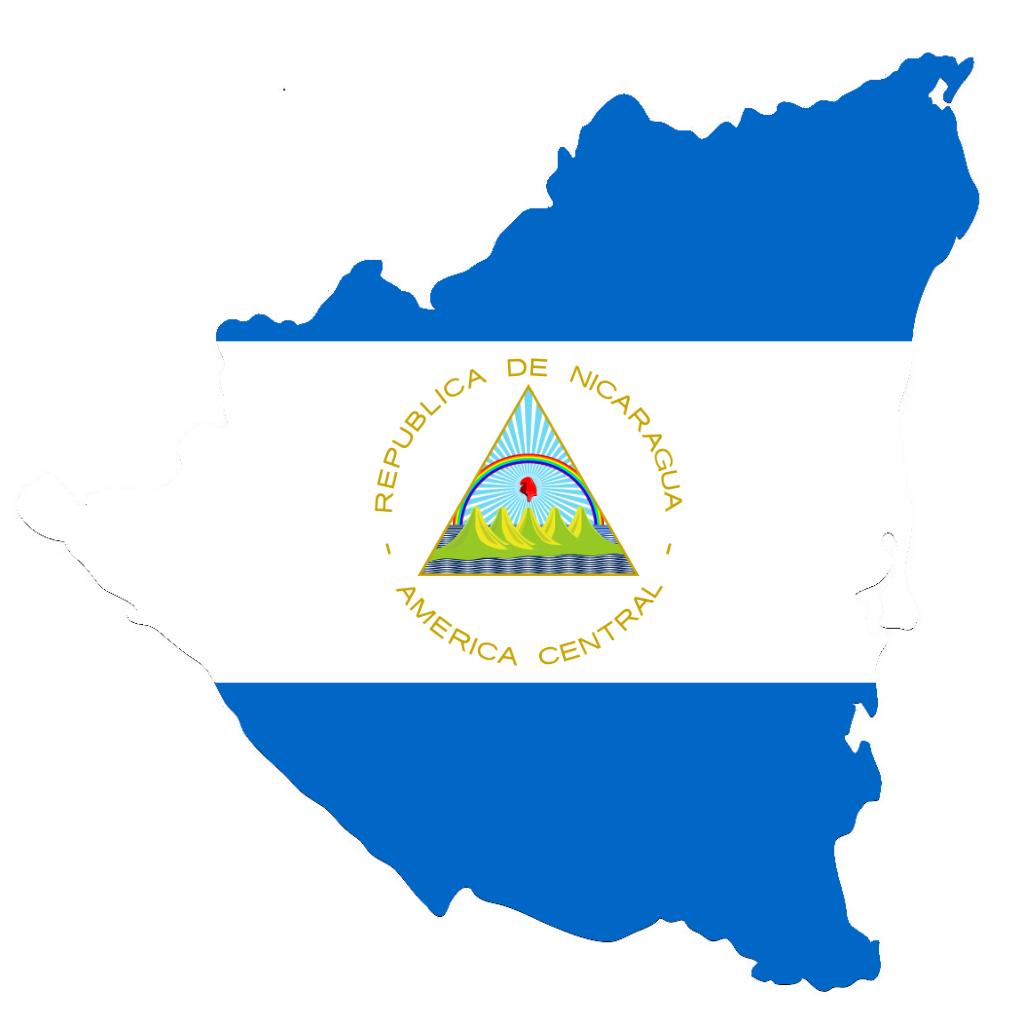
The color palette of the Nicaraguan flag is elegantly straightforward yet deeply symbolic. Comprising primarily of blue and white hues, these colors are chosen for their aesthetic appeal and ability to convey Nicaragua’s core values.
This palette sets the stage for a deeper exploration of each color, where every hue tells a part of Nicaragua’s story.
Meaning of Each Color
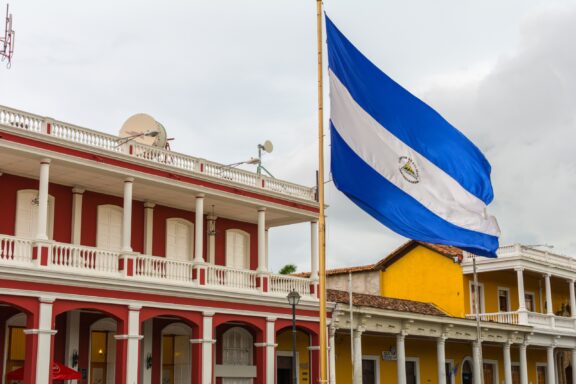
Blue
The azure or blue bands at the top and bottom of Nicaragua’s flag symbolize the Pacific Ocean and the Caribbean Sea, crucial geographical features of the country.
These vast bodies of water have shaped Nicaragua’s history, culture, and economy, especially considering the nation’s maritime heritage. In modern interpretations, blue also stands for justice and loyalty, reflecting the nation’s commitment to these principles.
White
The central white stripe represents peace. Flanked by blue, this color’s placement in the middle of the flag can symbolize the desire for tranquility and harmony within the nation and with its neighbors.
The white stripe’s positioning also implies Nicaragua’s role as a bridge of peace between the two great oceans that it borders.
Coat of Arms of Nicaragua
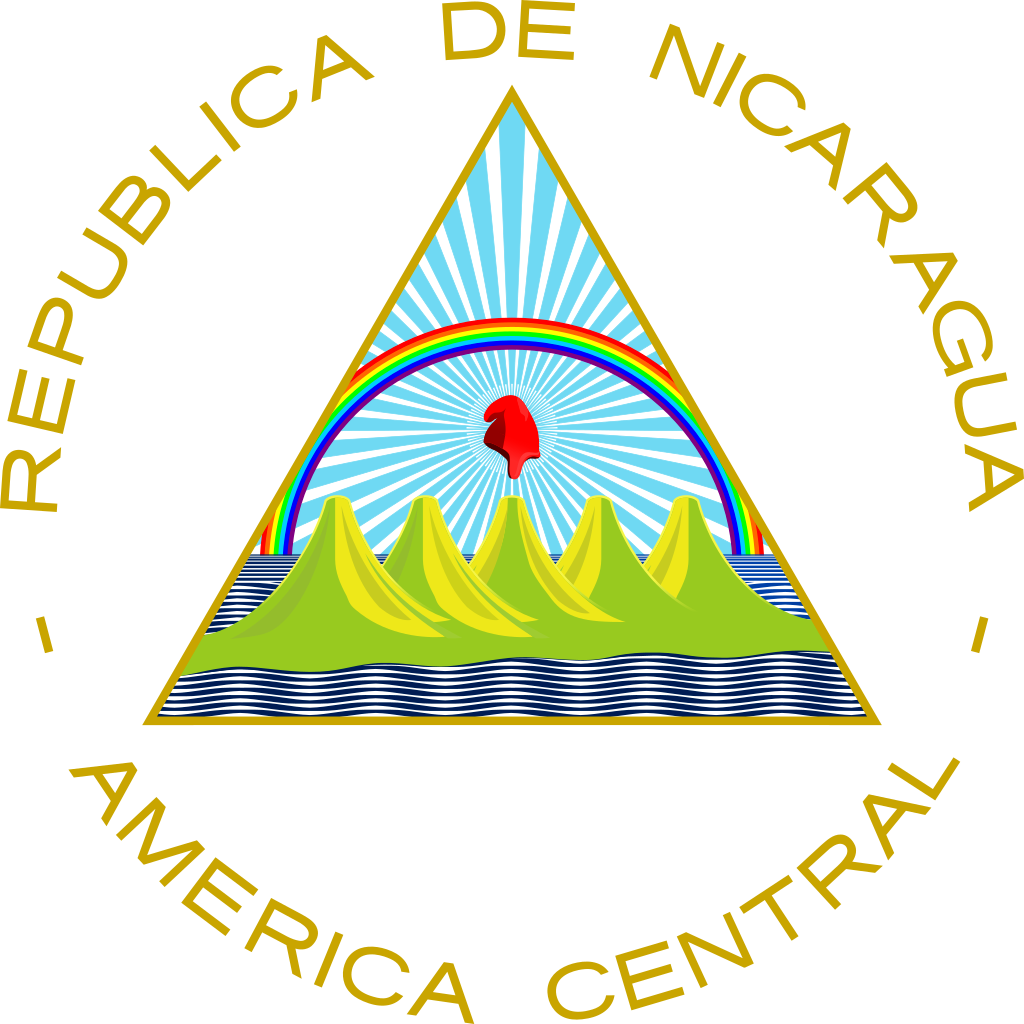
The Coat of Arms of Nicaragua, which appears in the center of the flag, is a complex symbol with deep historical and cultural meanings:
- Triangle: Represents equality, indicating Nicaragua’s commitment to fairness and equal rights for all its citizens.
- Rainbow: Symbolizes peace, reflecting the nation’s aspiration for a harmonious and tranquil society.
- Cap of Liberty: Signifies freedom, a value deeply ingrained in Nicaragua’s history, particularly its struggle for independence and self-determination.
- Five Volcanoes: These are emblematic of the unity of the five original Central American countries, signifying Nicaragua’s ties with its regional neighbors.
- Rays of the Sun: Represent the country’s bright future, an optimistic outlook for progress and development.
- Color Diversity in the Coat of Arms: Using various colors like gold, yellow, green, red, and, notably, purple in the rainbow adds a unique aspect to the Nicaraguan flag, as purple is rare in national flags.
The Coat of Arms’ composition with these elements encapsulates Nicaragua’s journey, natural beauty, and the aspirations of its people. It is a microcosm of the country’s identity, blending its past, present, and hopes for the future.
Historical Evolution and the Meaning Behind Changes
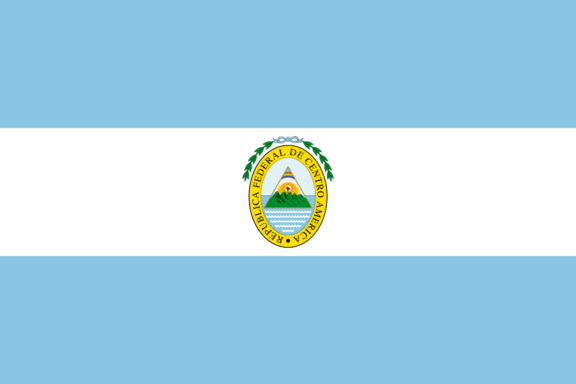
The flag of Nicaragua has undergone a dynamic evolution, mirroring the country’s historical and political transformations. Initially influenced by its membership in the United Provinces of Central America, early Nicaraguan flags shared similarities with the federation’s flag.
Following the dissolution of the federation, Nicaragua experienced a period where its flag underwent various redesigns, reflecting the nation’s shifting political landscape and identity search.
A significant shift occurred in 1908, returning to a design reminiscent of the earlier federation flag, symbolizing a renewed connection to Central American unity and historical roots.
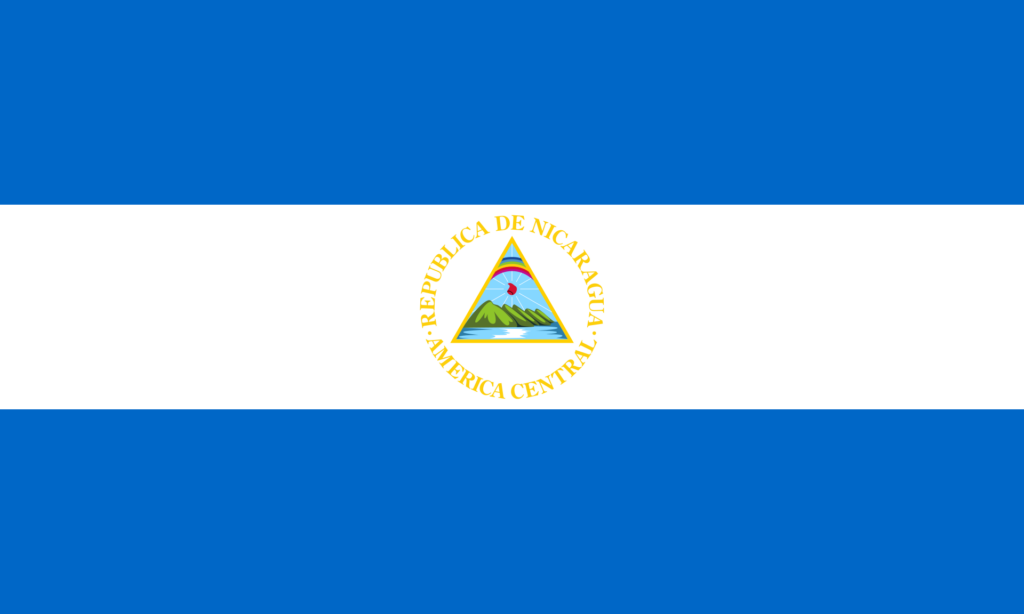
The most recent and significant change came in 1971, with the official adoption of the current flag design. This design maintained the traditional color scheme but introduced an updated Coat of Arms, encapsulating Nicaragua’s values and aspirations without altering the core symbolic colors.
Throughout its history, the flag’s evolving design has consistently reflected Nicaragua’s journey toward national harmony and character and its aspiration to forge a distinct place within the Central American region.
Overall Symbolic Meaning of the Flag
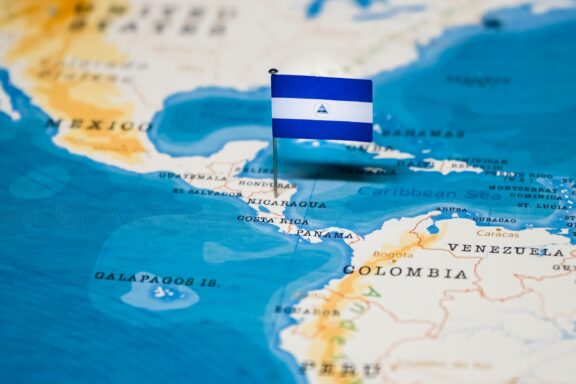
The Nicaraguan flag’s unique design, prominently featuring the central Coat of Arms, encapsulates the nation’s ethos, resilience, and origins. It symbolizes unity and reflects Nicaragua’s ties with its Central American neighbors and its dedication to regional cohesion. As a beacon of national pride, it captures Nicaragua’s strong spirit and essence, rooted in its rich origins.
Similar Flags to the Flag of Nicaragua
The Nicaraguan flag shares similarities with several other flags, largely due to shared historical and cultural influences:
Guatemala
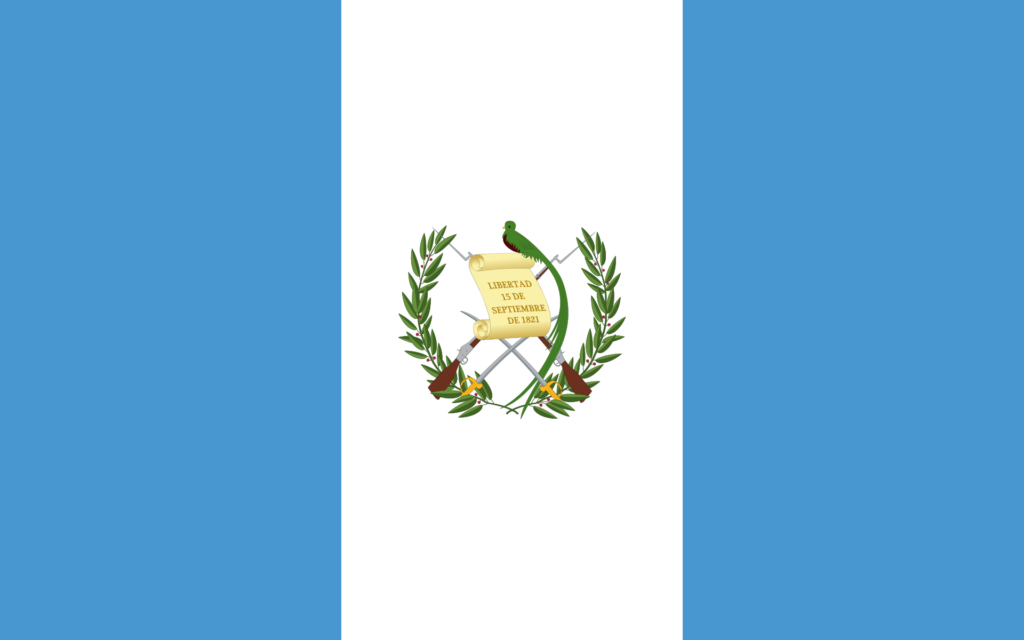
Guatemala’s flag features two vertical blue stripes on the sides and a white stripe in the center, similar to Nicaragua’s flag’s horizontal blue and white stripes. This resemblance is rooted in their shared history as part of the United Provinces of Central America.
Both flags’ blue and white colors indicate this historical connection, symbolizing the bond between these Central American nations.
El Salvador
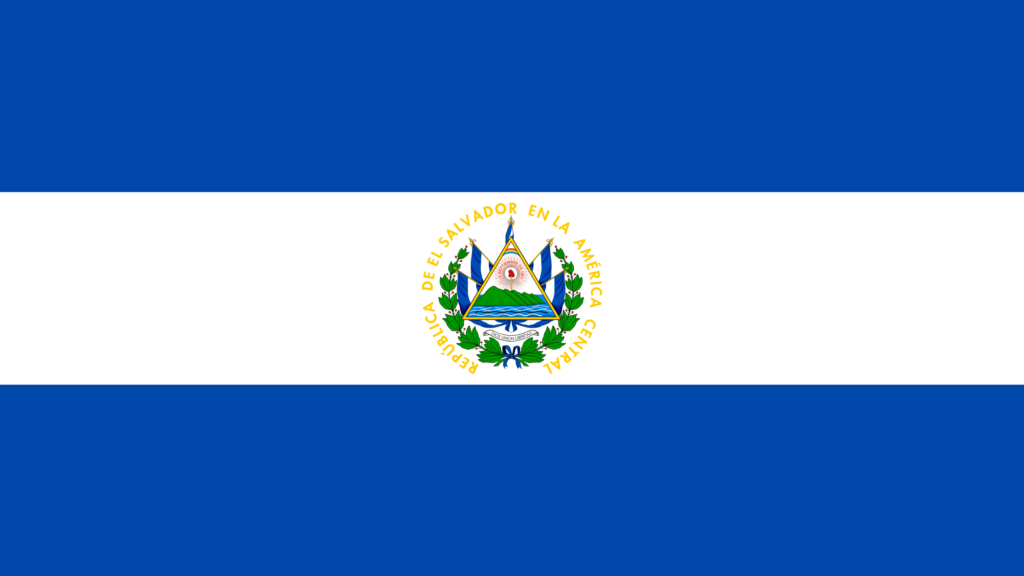
El Salvador’s flag also echoes the blue and white color scheme but with a different arrangement. It features a blue-white-blue horizontal stripe pattern akin to Nicaragua’s flag.
This similarity is due to their common heritage as former members of the United Provinces of Central America. The flags of both countries symbolize their shared history, cultural ties, and unity among the Central American nations.
Argentina
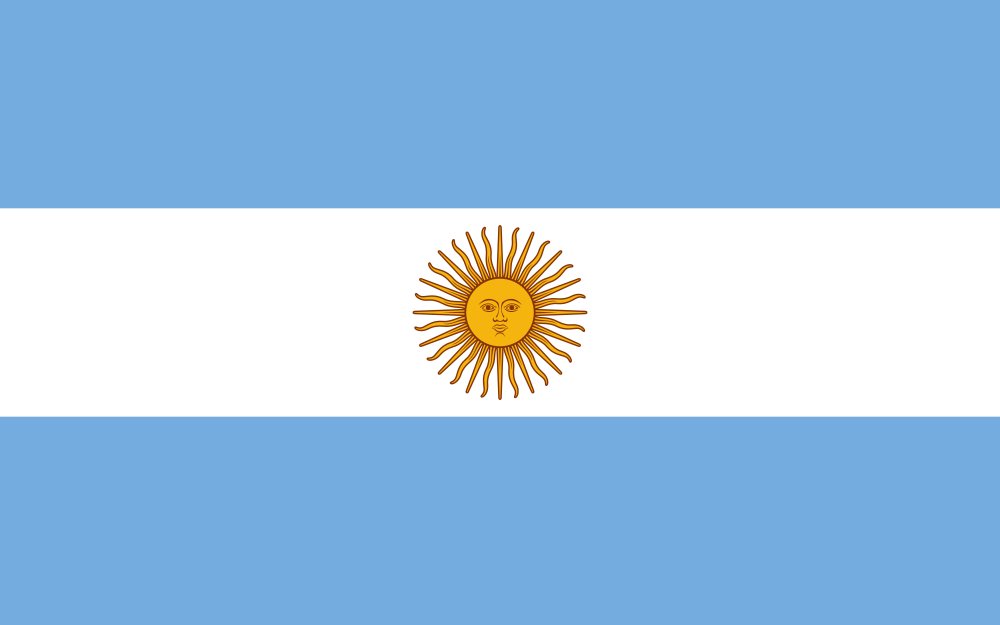
The flag of Argentina, with its light blue and white stripes, served as an inspiration for the flag of the Federal Republic of Central America, which in turn influenced the design of Nicaragua’s flag.
The similar use of blue and white in Argentine and Nicaraguan flags reflects this historical influence. While Argentina’s flag symbolizes its sky and clouds, the resemblance to Nicaragua’s flag highlights the broader historical ties and influences in flag designs across the Americas.
Final Thoughts
The Nicaraguan flag, unique design and emblematic colors, is a testament to the nation’s heritage and aspirations, occupying a distinctive place among the world’s flags. It symbolizes the nation’s identity and serves as a source of pride and unity for its people, resonating with their shared values and hopes.